
News • Unified framework
Establishing a global standard in sepsis and critical care
The heterogeneity of critical illnesses like sepsis, ARDS, and trauma creates immense challenges. A new, unified way to classify patients aims to improve treatment.

The heterogeneity of critical illnesses like sepsis, ARDS, and trauma creates immense challenges. A new, unified way to classify patients aims to improve treatment.

Researchers present a new method for generating human alveolar epithelial type I cells. This could ultimately progress therapies for people living with pulmonary diseases.
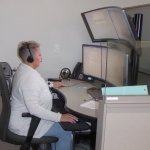
In their pursuit of solutions for pandemic challenges, a US hospital system applied telemedicine principles to respiratory therapy – with impressive results.
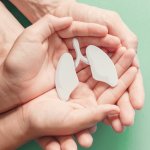
Researchers at Lund University in Sweden and Skåne University Hospital have conducted an animal study bringing hope that more donor lungs could be used in the future.
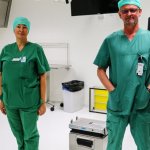
An animal study brings hope that more donor lungs could be used in the future. The researchers have launched a pilot study to investigate whether the treatment will have the same positive effects on human beings.
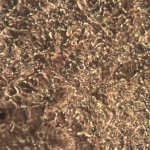
Scientists have grown beating heart cells to attempt to identify drugs to prevent Covid-19-related heart damage. Concerns over the extent of cardiac damage among Covid patients emerged during the coronavirus pandemic and there are also suggestions that the impact on cardiomyocytes could contribute to the symptoms of long Covid. To explore these issues, a research team at the University of…
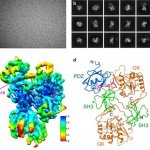
Scientists at the U.S. Department of Energy's (DOE) Brookhaven National Laboratory have published the first detailed atomic-level model of the SARS-CoV-2 "envelope" protein bound to a human protein essential for maintaining the lining of the lungs.
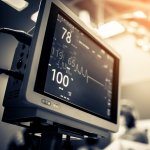
Researchers used AI to identify which daily changing clinical parameters best predict intervention responses in critically ill Covid-19 patients. The investigators used machine learning to predict which patients might get worse and not respond positively to being turned onto their front in intensive care units (ICUs) - a technique known as proning that is commonly used in this setting to improve…
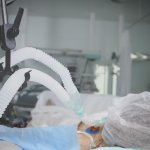
An unfortunate truth about the use of mechanical ventilation to save the lives of patients in respiratory distress is that the pressure used to inflate the lungs is likely to cause further lung damage. In a new study, scientists identified a molecule that is produced by immune cells during mechanical ventilation to try to decrease inflammation, but isn’t able to completely prevent…

Ultrasound could become the prime modality in emergency settings for tracking disease progression in COVID-19 patients. While chest CT has held a key diagnostic role thus far, many experts now advocate the benefits of ultrasound within the context of the coronavirus epidemic. Dr Rachel Liu, who recently led a high-profile panel discussion with experts from the USA and areas of Europe with high…
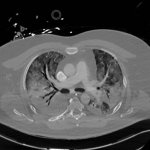
There are major complications from COVID-19 – ARDS, pulmonary embolism and neurological – that imaging can help detect, manage and/or follow up in the long term, radiologists from France and the UK explained during a recent ESR Connect session. ARDS is the most dreaded complication and the number one morbidity in COVID-19 patients. The incidence was up to 30% of patients in initial reports.…

Which patient will develop a severe form of COVID-19? This is an essential question which must be answered in order to improve the individual management and the prognosis of these patients. In a publication in the journal Science, teams from the Assistance publique – Hôpitaux de Paris (AP-HP), Inserm, Université de Paris, Institut Pasteur and Institut Imagine describe a unique and unexpected…
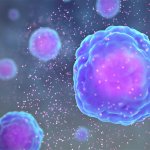
Leading immunologists in Japan are proposing a possible molecular mechanism that causes massive release of proinflammatory cytokines, or a cytokine storm, leading to the acute respiratory distress syndrome (ARDS) in COVID-19 patients. Their suggestions, published in the journal Immunity, are based on recent findings that explain how SARS-CoV-2 enters human cells.
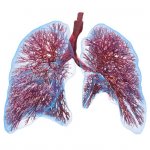
A computational lung model can be used to reduce damage caused by mechanical ventilation – and could increase survival rates for patients significantly.

Healthcare is going digital worldwide at an incredibly rapid pace. More and more applications for prevention, diagnostics and therapy are being made into apps (with matching hardware) for smartphones and tablets or are even available as wearables for direct use on the body. Digitalisation is also striding forward in Germany, where doctors, therapists and patients still take a fairly analogue…
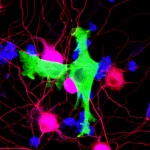
The University of Texas Health Science Center at Houston (UTHealth) has received funding through a public/private partnership for the first-ever clinical trial investigating a stem cell therapy for early treatment and prevention of complications after severe traumatic injury. The proposed Phase 2 trial is underwritten with $2 million from the Medical Technology Consortium (MTEC) and $1.5 million…

Innovative ‘artificial lungs’, which help the patients to breathe, offer less traumatic treatment for severe diseases such as acute respiratory distress syndrome (ARDS) or chronic obstructive pulmonary disease (COPD/AECOPD). Respiratory failure is one of the most frequent causes of ICU admission. It may occur inter alia in patients with ARDS, a dangerous condition when the respiratory system…

Progressive treatments offer new chances for cancer patients, but also could result in as yet unknown complications. The number of cancer patients transferred to the ICU for cancer-specific and internal medicine related reasons is on the increase. Caring for them on the ICU is a complex challenge, with interdisciplinary cooperation playing an essential part. Certain criteria need to be met for…

No one knows for sure how they got there. But the discovery that bacteria that normally live in the gut can be detected in the lungs of critically ill people and animals could mean a lot for intensive care patients.

Conventional therapy for ARDS patients and for patients with exacerbation of chronic obstructive pulmonary disease (COPD) has relied on invasive mechanical ventilation. Mechanical ventilation, however, has several major drawbacks: sedation has to be induced and the air being pressed into the lungs with positive pressure can damage the pulmonary alveoli or the diaphragm. Moreover, even maximum…

Research being conducted in the United Kingdom is focusing on techniques to help improve the weaning process for patients coming off mechanical ventilation in hospital intensive care units. Report: Mark Nicholls

The new Carescape R860 is an intuitive critical care ventilator that uses advanced lung protection tools and an innovative user interface to help improve patient care.

Many physiological and observational studies indicate that non-invasive ventilation (NIV) after both thoracic and abdominal surgery is helpful and non-randomised trials have indeed confirmed the benefits.

You’ll find Élie Azoulay everywhere during this year’s International Symposium on Intensive Care and Emergency Medicine (ISICEM).

Carefully adjusting mechanical ventilator settings in the intensive care unit to pump smaller breaths into very sick lungs can reduce the chances of dying by as much as 8 percent, according to a study by critical care experts at Johns Hopkins. Study participants were evaluated for two years after their acute lung injury.

Jean-Louis Vincent, Chairman of the Dept of Intensive Care, Erasme Hospital, Université Libre de Bruxelles, welcomes visitors to this year’s International Symposium on Intensive Care and Emergency Medicine.

An estimated 9 million children die each year from preventable and treatable causes. A new publication that lists medicines formulated for children is being made available now online by UNICEF and the World Health Organization, to help doctors and organizations obtain some of the 240 essential medicines that can save the lives of children.
New drugs that are helping fight a multi-front war on cancer may do the same for cardiovascular disease, Medical College of Georgia researchers said. Cancer and cardiovascular disease, both among top U.S. killers, share inflammation as a cause. Heat shock protein 90 inhibitors as a treatment could become additional common ground, said Dr. John Catravas, director of MCG's Vascular Biology Center.

In November 2009 about 150 leading infectious disease researchers gathered in Berlin for the National Forum for Innovation in Medicine. During the meeting, Professor Antoni Torres MD (Hospital Clinic-Ciberes, University of Barcelona) gave Meike Lerner insights into community acquired pneumonia research projects and findings

Since its early beginnings in Europe, during the polio epidemics of the 1950s, intensive care medicine has grown to become a specialty in its own right and the intensive care unit (ICU) occupies an increasingly important position in every hospital. Intensive care doctors are responsible for the management of very sick patients often with multiple and complex disease processes, and ICUs are now…

After previous meetings in the USA (2002) and Japan (2004), this October the 3rd International Workshop of Pulmonary Functional Imaging (IWPFI) took place in the German Cancer Research Centre, based in Heidelberg University, Germany. " 'The clinicians' need for earlier and more detailed diagnosis in pulmonary disease demands a joint interdisciplinary effort to push the limits in pulmonary…